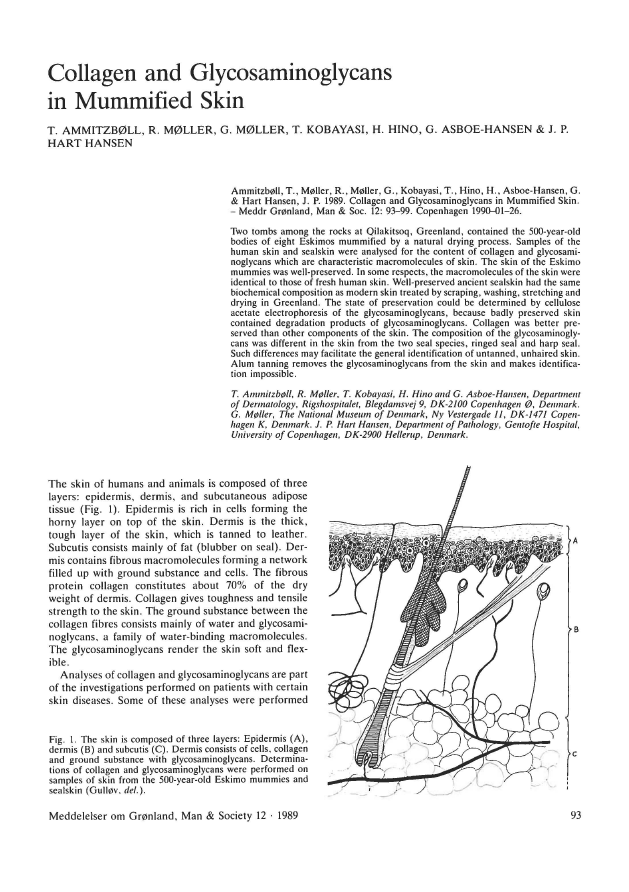Collagen and glycosaminoglycans in mummified skin
DOI:
https://doi.org/10.7146/mog-ms.v12.146597Abstract
Two tombs among the rocks at Qilakitsoq, Greenland, contained the 500-year-old bodies of eight Eskimos mummified by a natural drying process.
Samples of the human skin and sealskin were analysed for the content of collagen and glycosaminoglycans which are characteristic macromolecules of skin. The skin of the Eskimo mummies was well-preserved. In some respects, the macromolecules of the skin were identical to those of fresh human skin.
Well-preserved ancient sealskin had the same biochemical composition as modern skin treated by scraping, washing, stretching and drying in Greenland. The state of preservation could be determined by cellulose acetate electrophoresis of the glycosaminoglycans, because badly preserved skin contained degradation products of glycosaminoglycans. Collagen was better preserved than other components of the skin. The composition of the glycosaminoglycans was different in the skin from the two seal species, ringed seal and harp seal. Such differences may facilitate the general identification of untanned, unhaired skin. Alum tanning removes the glycosaminoglycans from the skin and makes identification impossible.

Downloads
Published
Issue
Section
License
Coypyright by the authors and the Commision for Scientific Research in Greenland / Danish Polar Center/Museum Tusculanum Press as indicated in the individual volumes. No parts of the publications may be reproduced in any form without the written permission by the copyright owners.
